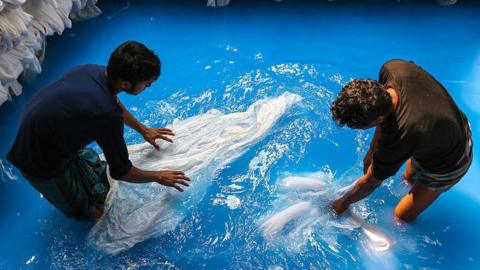In a small corner of rural Taiwan, set amongst other dye houses and small factories, the start-up Alchemie Technology is in the final phase of rolling out a project it claims will upend the global apparel industry and slash its carbon footprint.
The UK-based start-up has targeted one of the dirtiest parts of the apparel industry - dyeing fabric - with the world’s first digital dyeing process.
“Traditionally in dyeing fabric, you're steeping the fabric in water at 135 degrees celsius for up to four hours or so – gallons and tons of water. For example, to dye one ton of polyester, you're generating 30 tons of toxic wastewater,” Alchemie founder Dr Alan Hudd tells me.
“That is the same process that was developed 175 years ago in the northwest of England, in the Lancashire cotton mills and the Yorkshire cotton mills, and we exported it,” he points out, first to the US and then onto the factories in Asia.
